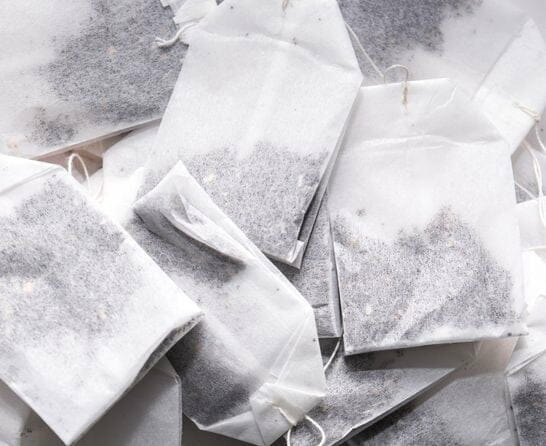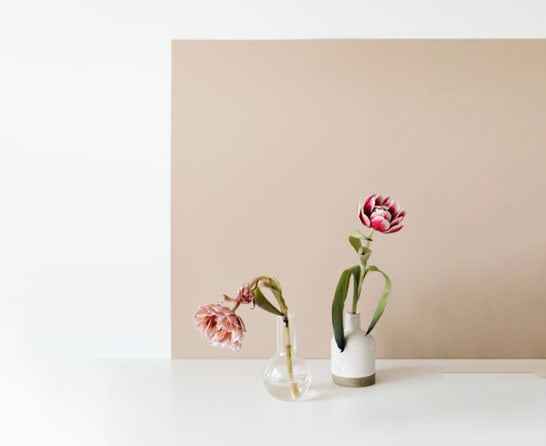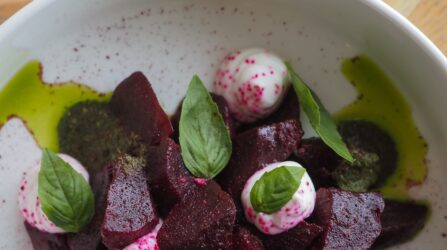Home > Female Body > Menstrual cycle > Can drinking tea really get rid of period cramps?


Let’s face it: period cramps are the worst! Not only do you have to deal with a host of other symptoms during your time of the month, but being in pain the entire time makes you feel miserable. While many women turn to traditional medications for pain relief, there’s actually a potent and delicious alternative: Tea! That’s right, drinking tea for period cramps has been a go-to for centuries, providing women with the relief they need from menstrual discomfort. Let’s explore how this powerful drink can transform your period one sip at a time.
Did you know that your menstrual cycle is more than just your period? It actually refers to all the stages the body goes through when preparing for a pregnancy. Even if you’re not planning on getting pregnant, the truth is your body doesn’t know that, so every month, it prepares a happy place for a potential fetus to live. When conception doesn’t happen, it cleans the house and begins setting up for the next month, repeating this cycle again and again. As women, understanding the complete menstrual cycle helps take the confusion out of why our bodies do what they do, which is why we’ve broken it down below.
There are two distinct phases: follicular and luteal. The names reflect what is happening in the ovaries during this period. “Follicular” refers to the follicles, while “luteal” comes from the corpus luteum, a structure that forms at the site of a ruptured follicle that has released an egg. As hormone fluctuations occur due to the ovaries, these phases are used to describe symptoms and events in the body. However, note that, at the same time, under the influence of hormones released by the ovaries, the uterine lining also changes and follows its own cycle.
It’s important to take care of your body during each phase of your menstrual cycle since you have different nutritional needs. One way to support your fluctuating hormones is through the food you eat. Along with the teas we’ll discuss in this article, there’s a ton of other delicious foods you should reach for during each phase of your menstrual cycle. Pairing high-quality nutrition with extra self-care will help you feel great all month long.
While there can be many possible causes of menstrual pain, the most common culprit is prostaglandins. Prostaglandins are chemicals produced by almost all cells in the body, they help to cope with injuries and inflammation. In the uterus they cause the muscles to relax and tighten, resulting in cramps, as it needs to expel the lining that is no longer needed, as conception hasn’t happened. Typically, the uterus begins releasing higher levels of prostaglandins a few days before your period, which is why you may notice that you experience cramps before menstruation begins.
If you suffer from extreme cramping, it could be due to a uterine or reproductive condition like uterine fibroids or endometriosis. Women with IUDs (intrauterine devices) can also experience increased cramps during their period.
Okay, now that we’ve gone over the different phases of your cycle and what causes those dreaded cramps, it’s time to get into the best part: tea! Tea is one of the most beloved drinks throughout the world, from Britain to Asia and beyond. While there’s no denying that it’s a delicious beverage, tea has numerous health benefits too. Women have used tea for menstrual cramps for generations, bringing much-needed relief from painful symptoms way beyond modern medicinal solutions.
In fact, tea has a ton of scientifically backed benefits, with one study showing an interesting connection between tea consumption and powerful antidepressant effects. The research showed that participants who consumed higher amounts of tea showed a lower risk of depression. Just three cups a day resulted in a 37% decrease in the risk of depression.
Within the study, black and green tea, which were the most tested, were shown to contain L-theanine and L-arginine, two stress-reducing properties.
During your menstrual cycle, these compounds can make all the difference in your mood and overall feeling of well-being. But it isn’t just their powerful antidepressant properties that make tea for period cramps so effective. It holds a host of benefits for helping tackle painful cramps for relief you can truly feel.
We know what you’re thinking, “This was just getting good and now you’re telling me I shouldn’t drink tea during my menstrual cycle?” Well, yes and no. At Hormona, we’re all about giving you all the facts so you can make the best decision for your health. The truth is, not all teas are great to drink during your period because of two culprits: caffeine and tannins.
Caffeine may be a necessary evil to get you through your busy day, but it has a bunch of side effects that can make period cramps worse. To start, caffeine can dehydrate you, which can make you sluggish and even more tired. It also reduces the blood flow to your uterus, worsening cramps. Additionally, caffeine can increase bloating and gastric motility, leading to an upset stomach. Finally, caffeine is known to cause anxiety, mood swings, and stress, which you’re already experiencing enough of, thanks to those nasty hormone swings.
Tannins are a chemical compound usually associated with wine, but they’re also found in tea. They actively inhibit your body from absorbing iron, which, when combined with period blood loss, can make you feel dizzy, tired, short of breath, and cause headaches. However, for most women, eating a diet full of iron-rich foods like dates, spinach, beans, eggs, and red meat can help retain healthy iron levels. Fortunately, there’s a bunch of tasty herbal teas for menstrual cramps that don’t contain caffeine and can help you feel great during your period.
The tea you drink during your menstrual cycle depends on which phase you’re in. Each type has different ingredients that provide benefits to support your body and keep pain at a minimum.
By far, your period is the toughest part of your cycle. Not only are you bleeding, but you probably feel tired and bloated and have to deal with painful cramping. The good news is there are two ultra-powerful teas that target menstrual symptoms so you can live your life like you’re not on your period.
Ginger tea is made with ginger root and is a spice that’s been used in herbal medicine for millennia. Ginger has a ton of benefits that target many of the common symptoms women experience during their menstrual cycle. To start, ginger is excellent for aiding digestion, as it speeds up how quickly your body processes food. Ginger is also great for reducing gas, bloating, and nausea. While a potent digestive aid, ginger also offers powerful anti-inflammatory benefits, with one study showing it was as effective as ibuprofen for treating period cramps. Many women believe ginger tea is the best tea for menstrual cramps since it offers noticeable pain relief while lessening other symptoms commonly associated with your menstrual cycle.
Women have used raspberry tea for cramps for centuries as it’s widely considered another best tea to help with period cramps. Raspberry leaves contain fragarine, which can reduce cramps, and high levels of antioxidants that lower inflammation. It’s also a diuretic, helping you flush out excess fluid and reducing water retention and excess puffiness.
Peppermint tea is a great period tea since it contains menthol, a potent secret weapon for dealing with all different types of stomach issues. Peppermint is a go-to herb for easing stomach upset and can help reduce bloating and diarrhea. It’s also great for relieving constipation and easing the symptoms of irritable bowel syndrome or IBS.
This part of the follicular phase is often when you feel the best, you’re full of energy, the pain is gone, and you’re ready to take on the world! During this time, you want a tea that’s gonna give you the energy you need to keep you feeling great and making the most out of your favorite menstrual phase.
Green tea is jam-packed with antioxidants and caffeine to help you kickstart your days. Since you’re no longer on your period, caffeine won’t have the same side effects, so you can feel good about drinking safe levels. In fact, green tea has so many great benefits you’ll want to drink it every day.
What benefits you may ask? Well, one study found that green tea can enhance cognitive function and improve memory. Participants who drank 27.5g of green tea per day showed more intense brain activity in areas involved in memory, learning, and decision-making. All said, green tea is excellent for keeping you energized and keeping away the dreaded brain fog. But please be mindful of how much tea is suitable for you. Depending on how it’s brewed, the caffeine content may approach the upper limit of what is considered safe.
Ovulation separates the follicular and luteal phases. Your progesterone levels begin to rise, and estrogen drops for a few days and then starts rising again. Because of the hormonal changes, you start to notice a change in mood and possible pain as your follicle releases its egg. During this time, there’s one tea that stands above the rest: Oolong.
Oolong tea is rich in the amino acid L-theanine, which we know from before, reduces anxiety. It’s also been shown to help reduce risk of cognitive diseases like Alzheimer’s and Parkinsons, which is a definite added plus! The polyphenols in Oolong tea reduce inflammation, making it another tea that helps with cramps.
The drop is estrogen and progesterone levels, along with rising prostaglandins can lead to a range of symptoms. This is the phase you’re experiencing when you say you have PMS, and man, it packs a punch. It’s common to have headaches, breast soreness, sugar cravings, bloating, mood swings, and sleep issues. The good news is, you guessed it, there’s a tea for that!
Chamomile tea is a great tea for PMS, thanks to its calming effects and sleep-inducing properties. Chamomile is even known to improve insomnia. No wonder it’s great for helping with the emotional ups and downs of PMS.
Research shows that chamomile tea can reduce anxiety, depression, and the tendency to cry at the drop of a hat, which occurs during the luteal phase. It’s a great choice all month long, especially if you tend to be anxious or stressed out easily.
Passionflower tea is considered one of the best teas for the time before your period since it helps promote restful sleep. In fact, just one cup a night for a week can dramatically improve your sleep and help reduce anxiety. Now that’s sweet!
Many women prefer to use an alternative treatment to reduce menstrual cycle pain, and fortunately, there’s a lot of effective options.
You can get noticeable pain relief by using tea to help treat your menstrual pain symptoms. Here are a few tips you can use to make your period more manageable.
A common question women ask is, “What tea is good for period cramps?” Fortunately, there isn’t just one tea for menstrual cycle pain relief and support, but a few great options. Does green, peppermint or raspberry leaf tea help with cramps? Yes! All of these teas can help you feel better during your period which is why drinking the right ones at the right time can help you feel great all month long.
When it comes to drinking tea for menstrual cramps and bloating, both hot and cold options work equally well. Try switching it up by adding fresh fruit, honey, or a pinch of cinnamon for a fun way to make your period less painful.
Keeping your pantry stocked with a bunch of different teas will make it easy to reach for a tea that helps with period cramps or one that gives you a kick of energy when you need it.
When it comes to your menstrual cycle, knowing the different phases and what to expect when they occur can provide peace of mind and help you prepare for upcoming symptoms. When it comes to period pain, tea is one of the best holistic treatments used by women for thousands of years. Knowing which tea to drink during each phase will keep you feeling great throughout the month so you can take on whatever the world throws your way. At Hormona, we’re proud to help women track and manage their hormones. Our exclusive Hormona app is your end-to-end solution for understanding how your hormones work so you can live in harmony with your body!
What tea should I drink to induce menstruation?
First of all, there is no need to induce menstruation just for the sake of having a period. If your period is delayed and you had unprotected sex this cycle, take a pregnancy test. If you haven’t had intercourse and have no idea what’s going on, schedule an appointment with your doctor; they can help you find the reason.
Menstruation is a byproduct of the body’s preparation for pregnancy that hasn’t happened in a given cycle. If you have recently experienced significant stress, over-exercised, or lost weight drastically, your periods may stop for a while until your body determines that the issue has been resolved. Therefore, there is no need to stimulate your body with something it doesn’t currently need, and there is no need to induce menstruation, unless there is a valid reason.
What teas should I avoid for period cramps?
Caffeinated teas like black tea can worsen period cramps and cause dehydration when consumed in large amounts, so you should avoid drinking an extra cup during your period.
Does chamomile tea delay periods?
No, there’s no evidence showing chamomile tea can delay your period.
Can tea stop menstrual bleeding?
Chamomile tea could help reduce the amount you bleed during your period and ease cramps, but it can’t stop your bleeding and there’s no other tea that can stop menstrual bleeding.
Can I drink cinnamon while on my period?
Yes, cinnamon is great to drink during your period since it helps soothe stomach upset, reduce PMS, and lower pain.

-


Dr Singh is the Medical Director of the Indiana Sleep Center. His research and clinical practice focuses on the myriad of sleep.

Understanding the female libido Before we can answer, “Does progesterone increase sex drive?” it’s important to gain a better understanding of what a “sex drive” means. The female libido or sex drive is how much you desire sexual activity. Every

Why am I so hungry before my period? Women who experience an increased appetite before period starts can feel frustrated that they’re craving foods they don’t normally eat. You may be wondering, “Why do I eat so much before my

Understanding cycle syncing workouts Did you know that evidence shows a link between the impact of exercise and menstrual cycle phases in women? It’s true. Women are at a higher risk of foot and ankle injury during workouts than men,
Hormona© 2025, All Rights Reserved
| Cookie | Duration | Description |
|---|---|---|
| cookielawinfo-checkbox-analytics | 11 months | This cookie is set by GDPR Cookie Consent plugin. The cookie is used to store the user consent for the cookies in the category "Analytics". |
| cookielawinfo-checkbox-functional | 11 months | The cookie is set by GDPR cookie consent to record the user consent for the cookies in the category "Functional". |
| cookielawinfo-checkbox-necessary | 11 months | This cookie is set by GDPR Cookie Consent plugin. The cookies is used to store the user consent for the cookies in the category "Necessary". |
| cookielawinfo-checkbox-others | 11 months | This cookie is set by GDPR Cookie Consent plugin. The cookie is used to store the user consent for the cookies in the category "Other. |
| cookielawinfo-checkbox-performance | 11 months | This cookie is set by GDPR Cookie Consent plugin. The cookie is used to store the user consent for the cookies in the category "Performance". |
| viewed_cookie_policy | 11 months | The cookie is set by the GDPR Cookie Consent plugin and is used to store whether or not user has consented to the use of cookies. It does not store any personal data. |
